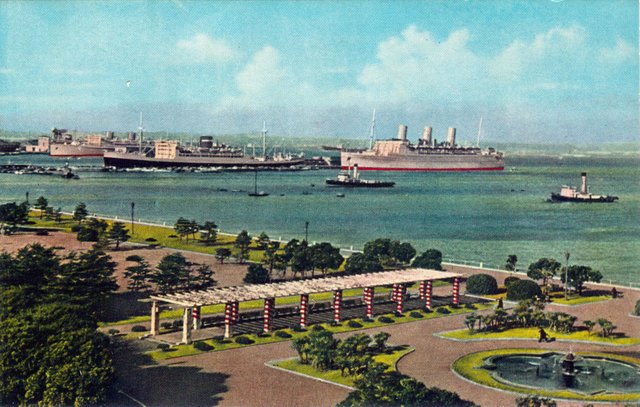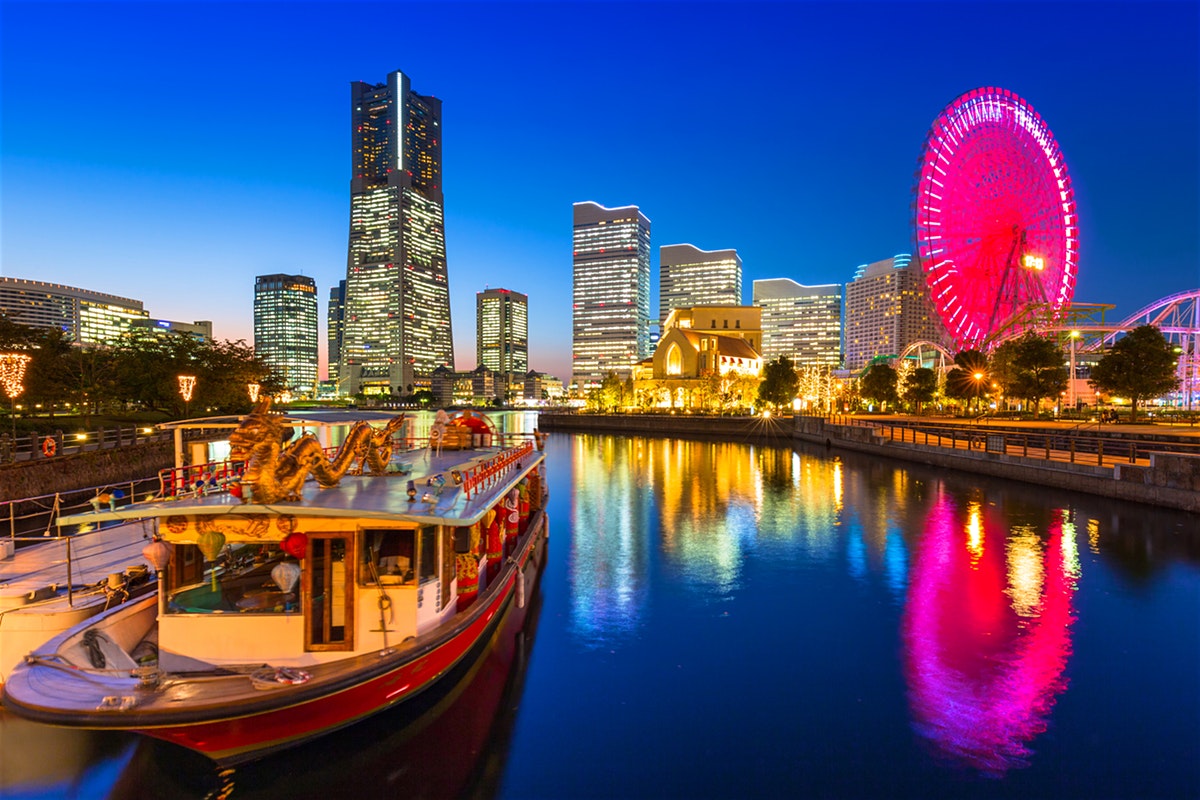
While the city of Yokohama is a relatively recent phenomenon, the immediate area is a treasure chest of historical sites, including the Otsuka and Saikachido sites dating from the Yayoi Period (300BC - 300AD). And Kamakura, which was the capital during the Kamakura Shogunate (1192 - 1333), has a plethora of ancient temples and historical sites as well as the Kanazawa Bunko library that was founded in 1275. The history of Yokohama itself, however, really started in the middle of the 19th century.
On July 8, 1853, a fleet of four American warships under the command of Commodore Matthew Perry arrived at Uraga, just south of Yokohama. Perry was carrying a letter from the President of the United States to the Emperor of Japan demanding that Japan open itself to international trade. After handing over the letter, Perry left Japan saying that he would be back one year later for an answer. Little did anyone realize that Perry's visit would lead to the elevation of an obscure fishing village on the southwestern coast of Tokyo Bay into the second largest city in Japan. But that is exactly the effect it had.
At the time of Perry's visit, Japan was under the control of the Tokugawa Shogunate, which had been established by Ieyasu Tokugawa after his victory in the Battle of Sekigahara in 1600. Ieyasu established his capital at Edo (present day Tokyo) and Yokohama came under direct shogunal jurisdiction.
In 1636, the Shogunate introduced an edict forcing total isolation on the country. No one was allowed in (with the exception of a small group of Chinese and Dutch traders, who were confined to Dejima, an artificial island just off the coast from Nagasaki), and no one was allowed out. This policy was strictly enforced until Perry arrived. Although the Japanese were loathe to open up their country to foreigners and dangerous foreign influence, the sight of Perry's steam-driven warships, which the Japanese called Kurofune, or "Black Ships," startled them. They realized that they were technologically inferior to the Americans and that if it came to hostilities, they would be hard pushed to defend Edo against the powerful cannons on the American warships.
When Perry returned in 1854, the Japanese signed the Kanagawa Treaty opening two ports, Shimoda and Hakodate, to American ships. In 1858, the US-Japan Treaty of Amity was signed, opening up six ports to foreign trade, including Kanagawa. One year later, the trading rights for foreigners were transferred to Yokohama, a sleepy little fishing village at the time. Thus began the transformation that was to turn Yokohama into one of the most famous port cities in the world.
Yokohama was selected as the base for foreigners as it was far enough away from Edo to prevent unnecessary contact with the foreigners, whom the Japanese called ketojin, or "hairy barbarians." The settlement was surrounded by a moat and divided into two sections: Kangai (outside the barrier) and Kannai (inside the barrier), and the foreigners were located in Kannai, which has since become the very heart of the city.
Relations between fanatic Japanese isolationists and the foreign traders were tense. In the first year, five foreigners were murdered. Things came to a head in September 1862 when Charles Richardson, a British merchant, was hacked to death by the bodyguard of the Daimyo, or "Lord," of Satsuma (now Kagoshima). Great Britain declared war on Satsuma and extracted retribution.
As the foreign traders flocked to Yokohama, the village was transformed into a hub of commercial activity and subsequent development. It grew in significance as a port when, in 1872, the first railroad in Japan connected Yokohama with Shimbashi in Tokyo and in 1889 it was constituted as a city with an area of 5.5 square kilometers and a population of 116,193.
Yokohama has continued to grow ever since, despite two major disasters; one natural and one induced by man. On September 1, 1923, the Kanto Plain was hit by a major earthquake, measuring 7.9 in magnitude on the Japanese scale. Yokohama was practically obliterated by the seismic shocks, the devastating fires that swept through the city, and the tsunami tidal wave that followed. Reconstruction efforts quickly restored the port and its function as a gateway to the nation. But in May 1945, as the Pacific Front of World War II moved to Japanese soil, most of the business areas and more than half of the port facilities were destroyed by Allied air raids. By 1952, the port was again reopened, this time with more modern shipping and railway facilities to establish Yokohama as one of the world's great commercial centers.
In 1985, when the population of Yokohama passed the 3 million mark, the city was already planning for the future. One of the most important projects in the city's history was announced. This was the development of Minato Mirai 21. The idea behind this project was to create "an information city of the 21st century incorporating an international culture center that was active around the clock." And it was to provide a "human environment surrounded by water, greenery, and history". A visit to this fascinating waterfront area will confirm the accuracy of that vision and just how far Yokohama has come since Perry's Black Ships first entered Uraga Bay.

You should put the link of this text. http://motherearthtravel.com/japan/yokohama/history.htm
Downvoting a post can decrease pending rewards and make it less visible. Common reasons:
Submit